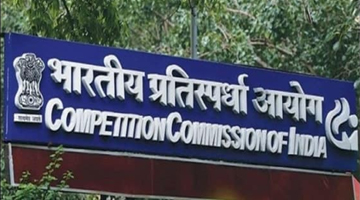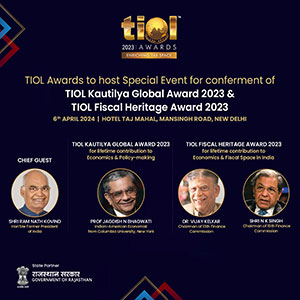Confusion, damage control and now, more confusion
JULY 29, 2015
By S Murugappan, Advocate
 ON 17.07.2015 the Government of India carried out amendments in three Notifications namely 30/2004-C.E. dated 09.07.2004, 1/2011-C.E. dated 01.03.2011 and 12/2012-C.E. dated 17.03.2012. These amendments were made in terms of Notifications No. 34/2015-CE, 35/2015-CE and 36/2015-CE respectively.
ON 17.07.2015 the Government of India carried out amendments in three Notifications namely 30/2004-C.E. dated 09.07.2004, 1/2011-C.E. dated 01.03.2011 and 12/2012-C.E. dated 17.03.2012. These amendments were made in terms of Notifications No. 34/2015-CE, 35/2015-CE and 36/2015-CE respectively.
The day these amendments were issued, they sent shock waves across the country among local manufacturers. Let us see why that happened.
If Notification No.30/2004 is taken as an example, before amendment, the proviso to the opening paragraph reads as follows.
"Provided that nothing contained in this notification shall apply to the goods in respect of which credit of duty on inputs or capital goods has been taken under the provisions of the CENVAT Credit Rules, 2002".
After the amendment the said proviso reads as follows.
“Provided that the said excisable goods are manufactured from inputs on which appropriate duty of excise leviable under the First Schedule to the Central Excise Tariff Act or additional duty of customs under section 3 of the Customs Tariff Act, 1975 (51 of 1975) has been paid and no credit of such excise duty or additional duty of customs on inputs has been taken by the manufacturer of such goods (and not the buyer of such goods), under the provisions of the CENVAT Credit Rules, 2004”.
The change made was subtle but it had a major impact. Before the amendment, seen in a proper perspective, there was no condition to be fulfilled by a manufacturer to avail the benefit of exemption. It only excluded certain categories of manufacturers from the scope of exemption. Or in other words, manufacturers availing certain cenvat facilities do not come within the purview of the notification. Manufacturers seeking the exemption benefit need not establish the duty paid nature of the inputs used.
After the amendment, every manufacturer who wanted to avail the exemption had to prove that the inputs used have suffered appropriate duty and that cenvat credit of the same has not been availed.
Notification No.30/2004 covers various textile products which are made by using inputs on which there is 'nil' excise duty or there is total exemption. For example cotton yarn is made from cotton and cotton attracts only 'Nil' duty as per the Excise tariff. In such a situation is the manufacturer of cotton yarn required to register with excise authorities and start paying excise duty after the above amendment?
In the case of Dhiren Chemicals reported in 2002-TIOL-83-SC-CX-CB a constitutional bench of the Supreme Court has held that the expression 'appropriate duty' will not include situations where the duty payable is NIL or the goods are exempted from payment of duty. Based on this judgment the government revised its stand taken earlier in 1995 in Circular No.125/36/95-CX dated 15.05.1995 to the effect that appropriate duty will include Nil duty also and clarified through Circular No. 667/58/2002-CX dated 26.09.2002 that that is no more the correct interpretation and that the Supreme Court ruling is to be followed in future.
Therefore, the cotton yarn manufacturers were among those who were totally confused with regard to payment of duty on the goods manufactured by them after the amendments.
The amending notifications contained a note but no explanation or reason as to why the government is coming out with such amendments now. There was no general clarification by way of circular or public notice by the Central Board of Excise and Customs. Thus a perfect situation was created to make the local manufacturers anxious and worried.
Now, the government has come out with three more amending notifications on 21.07.2015 and also a clarificatory Circular No. 1005/12/2015-CX dated 21.07.2015.
In the example Notification No.30/2004 cited above, now in terms of Notification No.37/2015 C.E dated 21.07.2015, the following explanation has been added.
"Explanation – For the purposes of this notification, appropriate duty or appropriate additional duty includes nil duty or concessional duty, whether or not read with any relevant exemption notification for the time being in force."
The Circular dated 21.07.2015 refers to the judgment of the Supreme Court in the case of SRF Ltd reported in 2015-TIOL-74-SC-CUS and states the following.
"2. The implication of the Hon'ble Supreme Court judgment was that all such final products when imported by manufacturer importer would have attracted concessional excise duty as CVD, while the domestic manufacturer of such final products had to forgo input tax credit to be eligible for such concessional rate. This would put the domestic manufacturers at a disadvantage vis-a-vis imports and would adversely impact the Make in India Policy of the Government.
3. The Judgment of the Hon'ble Supreme Court was examined in CBEC and it was found that there were certain errors apparent on record / interpretational issues and, with the concurrence of the Ld. Attorney General, a Review Petition / Revision Application has been filed against the same.
4. However, keeping in view of the adverse implications of the aforesaid judgment on the domestic industry, legal opinion was sought from the Ministry of Law & Justice as to whether pending the aforesaid Review Petition / Revision Application, such conditions in the relevant notifications be suitably amended so as to make the intention abundantly clear (that these conditions are to be satisfied by the manufacturers of such goods and not the buyer / importer of such goods)".
Now the intentions of the government have been made very clear through the above circular. But these amendments and the clarification do not appear to solve the issues but appear to complicate them further.
First, when a constitutional bench of the Supreme Court has laid down the law as to what ‘appropriate duty' means, can the government give it a different meaning by way of an explanation to a notification? Is it legal? Further this explanation is limited to the particular notification and does not disturb the earlier circular of 2002. In such a case, what about consistency in interpretation of such expressions that are prone to different views? Thus the assessees will have to accept different meanings for the same words in different contexts leading to uncertainty.
Second, it is stated in the circular that the intention is to bar the importers from availing the exemption in these cases. The circular states that these conditions are to be satisfied by the manufacturers of such goods and not the buyer/importer of such goods.
While the circular refers to the expression ‘buyer/ importer', the amending Notification Nos. 34/2015 to 36/2015 refers only to ‘the buyer' within brackets. The amendments state ‘and not the buyer of such goods'.
By using the above expression the government appears to think that the importers of similar goods can be denied the benefit of exemption. In this process it appears that the government has lost sight of the fundamental principles laid down by the Supreme Court in the SRF Ltd case and the earlier cases referred to in that case. The Apex court has analysed the scope of levy of additional duty for imported goods in the context of section 3(1) of Customs Tariff Act 1975 and has held, in a series of judgments, that the importer cannot be denied similar benefits. SRF Ltd is not the first case.
SRF Ltd case refers to the judgment given by the Apex court in the case of Aidek Tourism Services Pvt. Ltd reported in 2015-TIOL-23-SC-CUS . That case refers to several judgments rendered by the Apex Court in similar situations, including the case of Thermax Private Limited reported in 2002-TIOL-683-SC-CUS-LB .
In the Thermax case the following observations were made by the Apex Court
"That aspect is provided for by Section 3(1) of C.T. Act which specifically mandates that the CVD will be equal to the excise duty for the time being leviable on a like article if produced or manufactured in India. In other words, we have to forget that the goods are imported, imagine that the importer had manufactured the goods in India and determine the amount of excise duty that he would have been called upon to pay in that event. Thus, if the person using the goods is entitled to the remission, the importer will be entitled to say that the CVD should only be the amount of concessional duty and, if he has paid more, will be entitled to ask for a refund".
Therefore incorporation of the words –‘and not the buyer of such goods' in the excise notification will not prevent the importer from claiming the benefit of the relevant excise notification.
Or in other words a notification in terms of Section 5A of Central Excise Act, 1944 cannot be issued stating that such a notification will not apply to an importer. While conditions can be imposed for availing exemption benefits, there cannot be any stipulation that such benefits are excluded to importers. Such stipulations will be totally contrary to the provisions of Section 3(1) of Customs Tariff Act 1975 and a notification issued by the government cannot override the provisions of an Act enacted by Parliament.
Third, the expression ‘buyer' used in a notification issued under central excise law in the context of Section 5A cannot be taken to mean only an ‘importer'. The expression used in the amending notification is ‘the buyer of such goods' . In the context, it is used in the excise notification it can refer to a buyer of such goods from the manufacturer. To this extent the reference made in paragraph 4 of the circular dated 21.07.2015 to ‘the buyer/importer' appears to be flawed. One need not necessarily assign the meaning ‘importer' to the word ‘buyer' in the above amending notification.
The way the proviso is worded now it can mean that the manufacturer of the end products should not avail cenvat facility on the inputs and not the buyer of such end products. It goes without saying that a buyer of such goods cannot take credit of duty paid on the inputs because he is not the manufacturer but a buyer from the manufacturer. If there is any other intention, then that appears not to have come out clearly.
Therefore it appears that in spite of these amendments the importers can still claim the benefit of such exemptions based on the principles laid down by the Supreme Court in the rulings referred to above. It also will be interest to note that as per the circular, the government is seeking review of the ruling in the SRF Ltd case but accepted the earlier rulings without much ado.
Suffice to say, in the days to come, there will more confusion and more litigation.
|
(DISCLAIMER : The views expressed are strictly of the author and Taxindiaonline.com doesn't necessarily subscribe to the same. Taxindiaonline.com Pvt. Ltd. is not responsible or liable for any loss or damage caused to anyone due to any interpretation, error, omission in the articles being hosted on the sites)
|









 ON 17.07.2015 the Government of India carried out amendments in three Notifications namely 30/2004-C.E. dated 09.07.2004, 1/2011-C.E. dated 01.03.2011 and 12/2012-C.E. dated 17.03.2012. These amendments were made in terms of Notifications No. 34/2015-CE, 35/2015-CE and 36/2015-CE respectively.
ON 17.07.2015 the Government of India carried out amendments in three Notifications namely 30/2004-C.E. dated 09.07.2004, 1/2011-C.E. dated 01.03.2011 and 12/2012-C.E. dated 17.03.2012. These amendments were made in terms of Notifications No. 34/2015-CE, 35/2015-CE and 36/2015-CE respectively. 





